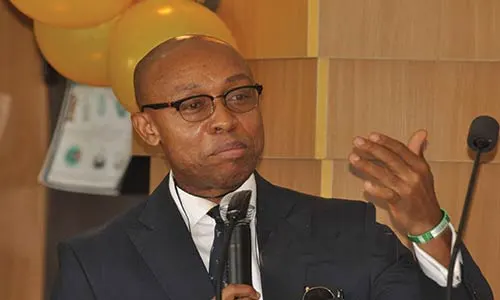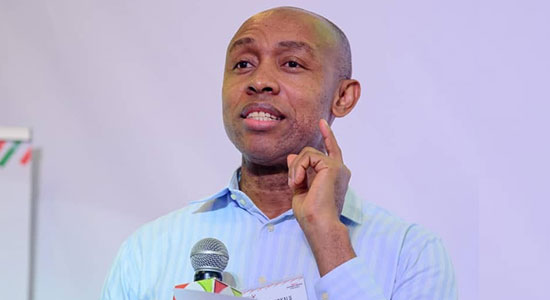A Half Century Of Banditry In Nigeria

By Chidi Anselm Odinkalu
Since well before Nigeria’s return to elective governance in 1999, the country has been overtaken by a progressive escalation of what Hannah Arendt in her classic On Violence called “a massive intrusion of criminal violence into politics.” In contemporary Nigerianism, the word for this is “banditry”.
“Bandits” is a conveniently capacious bogeyman for insecurity in Nigeria that precludes necessary questions as to the provenance of the descent into lawlessness. It captures diverse elements that may include terrorists, cultists, herdsmen, kidnappers, criminal gangs, and militants.
Originally applied to the motorcycle gangs who perpetrate carnage in different parts of Nigeria’s north-west, bandits have now become the trope for an intolerable toll of destruction by mostly non-state entities as well as the inexplicable haplessness of Nigeria’s federal government that has never been known to cringe at the thought of exterminating significant numbers of its citizens. This lamentable situation compels a retrospective on how what the country now calls banditry evolved.
Since Independence, successive governments in Nigeria have confronted variants of banditry. The evidence over time suggests a link between governance, its failures, and what is now called banditry. As a usage, it conflates two underlying crises – government without consequences and ungoverned spaces.
In This Present Darkness, his history of organized crime in Nigeria, Stephen Ellis traces post-independence banditry in Nigeria to “shortly before the civil war, when government broke down in some parts of the Western Region and there was a blurred line between political violence, crime, and organized insurgency.” When the war ended in 1970, the military regime failed to manage demobilization.
In Southern Nigeria, which comprises a mere 29% of Nigeria’s nearly 924,000 km² of landmass, urban banditry ensued. Armed robbery in built-up areas of the country was an early manifestation. An early exponent of this was Ishola Oyenusi, a high-school dropout who chose to be called “the Doctor” and terrorized Lagos at the end of the Civil War. In response, the military government introduced mandatory death by firing squad for convicted armed robbers. The first public executions took place in front of Bar Beach, in Victoria Island, Lagos on 26 April 1971. Less than four and a half months later, on 8 September 1971, Oyenusi was executed at the same location.
The pace of public executions quickly escalated. By 1979, Nigeria had publicly executed over 500 armed robbers by firing squad. In 1984 alone, the regime of Major-General Muhammadu Buhari, shot at least 355. In 1985, it killed another 301 by firing squad. In 12 years between 1984 and 1996, over 1,200 of such executions took place.
In 1984, the response of General Muhammadu Buhari to the emergence of drug trafficking as a new dimension to outlawry in Nigeria was also the firing squad. Far from being mitigated, however, drug trafficking by Nigerians became more organized, more lucrative, and more violent.
In a little-noticed release on 21 December 2018, Nigeria’s then Defence Minister, Mansur Dan-Ali, a retired one-Star General from Zamfara State, complained: “the issue of (sic) drug abuse, unemployment and governance amongst others contributes to the deplorable security situation in Zamfara State.” In the same month the Buhari administration launched a Presidential Advisory Committee on the Elimination of Drug Abuse chaired by retired Brigadier Buba Marwa. The membership included the wives of both the President and the Vice-President. In the four decades that separated the beginning and end of Buhari’s two tours of duty as head of state, Nigeria’s response to organized drug cartels had evolved from firing squad to pillow-talk.
It appeared that each succeeding decade saw an intensification of urban outlawry in different parts of southern Nigeria. In the 1980s, the poster-boy was Lawrence Anini, another school drop-out who concatenated indiscriminate violence with a touch of Robin-Hood in a peculiar form of advocacy for the downtrodden.
Anini’s reign of terror in the then Bendel and surrounding states was facilitated by the complicity of some senior police personnel who helped to provide his gang with intelligence and disappeared evidence against them. When two members of his gang were convicted in mid-1986 following effective police work, Anini turned his guns against the police in an intense rampage of mass killing, during which 10 police officers in Bendel State died between August and October 1986. That would prove to be his undoing.
Military President, Ibrahim Babangida, turned up the heat on then Inspector-General of Police, Etim Inyang, famously asking him during a meeting of the then ruling military council in October 1986: “where is Anini”? Two months later, in December 1986, the police arrested Anini and dismantled his gang, which included George Iyamu, a Police Superintendent. In March 1987, they were executed.
In the 1990s, Shina Rambo terrorised parts of south-west Nigeria with similar escapades. In south-east Nigeria, the Otokoto case in Owerri, Imo State, in 1996 revealed a netherworld of ritualized human sacrifice.
By the 2000s, political violence and assassinations would emerge as dominant forms of outlawry. With the introduction of online banking to minimize cash-in-transit, armed robbers began stealing human beings in order to get their money. Commercial kidnapping boomed. In Osisikankwu (Obioma Nwankwo) in Abia State and resource militants in the Niger Delta traded in this. In parts of south-east Nigeria, politicians and these organized crime gangs made common cause leading government to break down. In response, a bandit, vigilante horde, known as Bakassi Boys took over the streets.
Three additional factors collaborated in launching this new phase.
First, public universities incredibly became fertile breeding grounds for outlaws. The story originated in competition among university-based confraternities, which forced the Pyrates Confraternity, the oldest of these confraternities in Nigeria, to leave the universities about 1986. The Supreme Eiye Confraternity (National Association of Airlords) emerged in Lagos around 1965 as rival to the Pyrates. In Ibadan, the National Association of Sealords, better known as the Buccaneers, followed by 1972. University of Calabar produced the Klansmen Confraternity and in University of Port Harcourt, the Vikings emerged. These university cults “pursue their cause with brazen audacity and outright disregard for the laws of the country.”
The growth of these groups coincided with the emergence of articulate civic activism in the universities led by the National Union of Nigerian Students (NUNS), later known as the National Association of Nigerian students (NANS). Military rulers co-opted these cults to disrupt official student activism. Competing groups in the politics of university administration also found them useful. In the Niger Delta, Stephen Ellis recalls, they “became a factor in the region’s politics.”
Second, mismanagement of natural resources exploitation in the country energized the transition from urban to rural banditry. Southern Kaduna, for instance, had always been rich in gemstones, including diamond, sapphire, quartz, ruby, temaline, and aquamarine. In the early-to-mid 1980s, this set off a mad rush of artisanal gemstone rustlers who invaded communities in Jema’a. The rustlers came from as far as Mali, Senegal and Sudan in search of shiny gemstones that the locals called “devil stones”.
In 1986, Newswatch Magazine’s Aniete Usen reported “cases of eliminating by kidnapping, sudden disappearance of dealers and diggers and a whole range of other blood-chilling tales. The barons, agents and diggers became fanatically…. fully armed with automatic weapons.” The weapons they brought into Southern Kaduna would feature prominently in the first Kafanchan crisis in 1987. Their methods have been evident in the descent from artisanal mining to organized banditry in Birnin-Gwari and Zamfara three decades later.
Third, Babangida’s transition to civil rule programme created a mutual support network between politicians, robbers and cults. In the Niger Delta, the military regime of General Abacha introduced guns to quell civic advocacy for resource justice. In 1994, they deployed the Joint (Military) Task Force. Three decades later, the guns are everywhere and the JTF is mired in an interminable mission.
By 2008, Mujahid Asari Dokubo, asked how the armed youths in the Niger Delta who traded in violence acquired their weapons, answered the Rivers State Truth and Reconciliation Commission presided over by former Supreme Court Justice, Kayode Eso, that “the guns were purchased with money disbursed by politicians.”
Quite clearly, successive regimes in Nigeria have found pockets of banditry useful in the enterprise of taking and keeping power. Unsurprisingly, politicians are mostly half-hearted in fighting it. During elections in 2023, for instance, banditry nearly vanished remarkably. Immediately after the vote, it resumed with full force. It seems rather evident that in Nigeria now, the bandits and the politicians are in bed with one another.
A lawyer and a teacher, Odinkalu can be reached at [email protected]. A version of this article first appeared in December 2018 as “Banditry in Nigeria: A Brief History of A Long War.”



